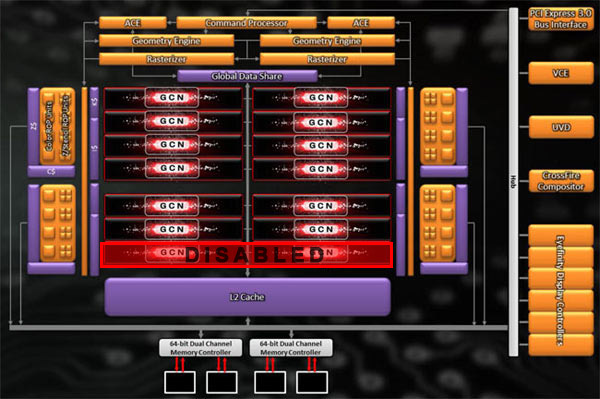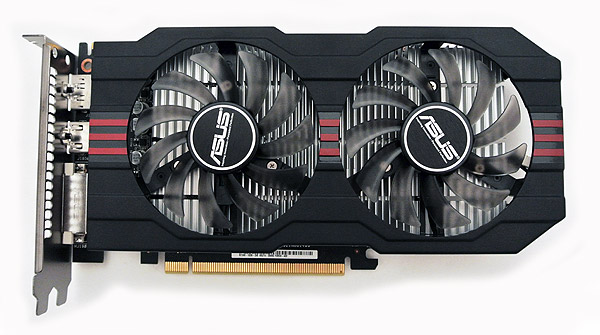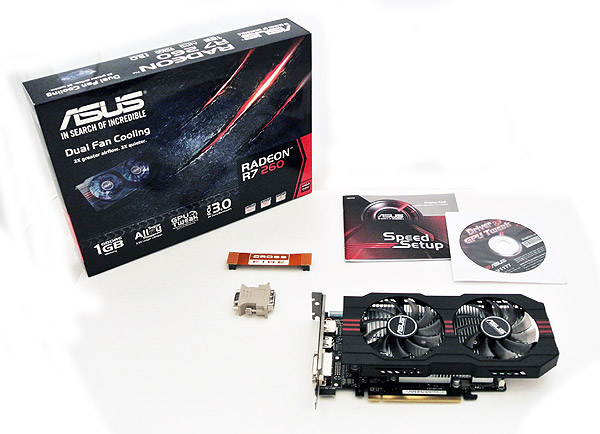AMD Radeon R7 260 Review: The Bonaire GPU Rides Again
AMD announced its Radeon R7 260 in December of last year, and we were excited about a $110 Radeon HD 7770 replacement. Almost two months later, one model is available on Newegg for $140. Today, we're testing the card and pondering its curious position.
Radeon R7 260: The Budget Hero That Hasn't Arrived
AMD paper-launched the Radeon R7 260 in December. The specifications it published, along with the $110 price it announced, got me excited. Sure, high-end cards like the Radeon R9 290X and GeForce GTX 780 Ti get more of the glory. But for gamers on a budget, the mainstream boards derived from that flagship technology are the real heroes. Take AMD's Radeon HD 7770, for example. It makes 1920x1080 a viable resolution at low to medium detail settings. Understandably, then, the prospect of an even faster Radeon R7 260 for the same $110 was very appealing. I eagerly waited for the product to show up mid-January.
The fifteenth came and went. Now it's February and, as I write this, there is only one Radeon R7 260 on Newegg, Asus' R7260-1GD5 with 1 GB of memory for $140 (Ed.: Just prior to publication, an MSI model appeared for $125, too). In comparison, the same company's R7260X-DC2OC-2GD5, based on a faster version of the Bonaire GPU with twice as much memory, goes for $150. Other 260Xes with 2 GB sell for as little as $130. Needless to say, as a result of dubious inventory and a high price on the models we can find, my enthusiasm about AMD's Radeon R7 260 took a severe beating.
Right now, it appears that most of the add-in board partners are choosing not to sell their own R7 260s, preferring instead to push their Radeon HD 7770s until those are gone, along with the Radeon R7 260X. Although the 260's prospects look grim right now, we also know that things change quickly in the graphics world. So, we're giving the card a closer look, despite its precarious position.
The Radeon R7 260 employs a cut-down version of the Bonaire GPU, first seen in the Radeon HD 7790 and then in the Radeon R7 260X. Two of the processor's 14 Compute Units are disabled, resulting in a total of 768 shaders and 48 texture units. The render back-end is untouched; two ROP partitions can handle 16 pixels per clock, while a pair of 64-bit dual-channel memory controllers yield an aggregate 128-bit memory interface. And because the Radeon R7 260 utilizes Bonaire, it does support AMD's TrueAudio feature (though we still haven't seen any software optimized for this capability).
| Header Cell - Column 0 | GeForce GTX 650 Ti | Radeon HD 7770 | Radeon R7 260 | Radeon R7 260X |
|---|---|---|---|---|
| Shaders | 768 | 640 | 768 | 896 |
| Texture Units | 64 | 40 | 48 | 56 |
| ROPs | 16 | 16 | 16 | 16 |
| Process Technology | 28 nm | 28 nm | 28 nm | 28 nm |
| Core/Boost Clock | 925 MHz | 1 GHz | 1000 MHz | 1100 MHz |
| Memory Clock | 1350 MHz | 1125 MHz | 1500 MHz | 1625 MHz |
| Memory Bus | 128-bit | 128-bit | 128-bit | 128-bit |
| Memory Bandwidth | 86.4 GB/s | 72 GB/s | 96 GB/s | 104 GB/s |
| Graphics Memory | 1 or 2 GB GDDR5 | 1 GB GDDR5 | 1 or 2 GB GDDR5 | 1 or 2 GB GDDR5 |
| Power Connectors | 1 x 6-pin | 1 x 6-pin | 1 x 6-pin | 1 x 6-pin |
| Maximum TDP | 110 W | 80 W | 95 W | 115 W |
| Newegg Price Range | $110-$175 | $110-$170 | $125-$140 | $130 to $150 |
With roughly 10%-lower clocks, 5% less memory bandwidth, and approximately 14% fewer pixel shaders than the Radeon R7 260X, I expect the Radeon R7 260 to perform right between the 260X and Radeon HD 7770.
Asus' R7260-1GD5
Let's have a look at the one Radeon R7 260 we could get our hands on, Asus' R7260-1GD5. The front of the card is covered in a fan shroud with the company's classic black and red color scheme. It appears slightly longer than 8.5". But flip it over and you'll see that the PCB is much smaller; the cooler extends far past its edge. The circuit board is 7" x 4.5". While the card looks substantially-sized, it weighs just over one pound.
The R7260-1GD5 adheres to AMD's reference clock rates, with a 1000 MHz GPU and GDDR5 memory operating at up to 1500 MHz. Again, you only get 1 GB, which we'd expect to limit the resolutions and detail settings that are playable.
Get Tom's Hardware's best news and in-depth reviews, straight to your inbox.
The solid aluminum heat sink is cooled by two 75 mm low-profile fans. There's one six-pin auxiliary power connector and one CrossFire connector, used to enable dual-card configurations.
Asus arms its card's rear I/O bracket with one full-sized DisplayPort output, HDMI, and a dual-link DVI connector. Even legacy VGA is covered through a bundled adapter.
The rest of the bundle is composed of a CrossFire connector, a driver/software CD, and a setup booklet. Asus' GPU Tweak utility supports this board, and that small piece of software works very well for overclocking.
Current page: Radeon R7 260: The Budget Hero That Hasn't Arrived
Next Page Test Setup And BenchmarksDon Woligroski was a former senior hardware editor for Tom's Hardware. He has covered a wide range of PC hardware topics, including CPUs, GPUs, system building, and emerging technologies.
-
Novuake Mildly frustrating the HD 7790 is not included. Since its bonaire too? You know, the apples with apples concept?:/Reply -
mapesdhs If the price difference is so small compared to the 260X, why would anyoneReply
bother with the 260? Skip a couple of beers and get a 260X. An utterly
unnecessary product IMO, it's just making use of dies that couldn't make the
grade for higher models.
Also, it's sad that we don't see single-slot cards anymore.
Ian.
-
rdc85 I'm agreed with the review,I think in their perspective the 7770 still selling well, there no rush to put 260 out...putting it out at 110~120 will cannibalize the 7770...Reply -
wtfxxxgp Hmmm... I don't really know where I stand on this one. I suppose I want to see what happens when the market forces of supply and demand start having an effect on the price, otherwise, I think it's a pretty decent card but just TOO close to the 260X which may be the one I'd choose if I were looking for a card in that league. I'm getting my GTX 760 at month-end finally, so this is not going to turn my head or change my plans...Reply -
ddpruitt Great review, especially given what it's competing at in the same price range. It's interesting that AMD isn't pushing vendors to differentiate the products a bit more and get rid of the 7770s to allow more room for the R260s to breath. However...Reply
Naturally, discrete graphics cards require a substantial amount of stable power, so XFX sent along its PRO850W 80 PLUS Bronze-certified power supply. This modular PSU employs a single +12 V rail rated for 70 A. XFX claims that this unit provides 850 W of continuous power
Statements like this are what's causing Watt inflation and the myth that you need a dedicated transformer to run a PC. The review itself points out that system wattage is less than a quarter of the max continuous wattage. I think it's a serious disservice to constantly repeat this statement when it's clearly not true. At the very least it should be rewritten a bit. -
vertexx Reply12618389 said:Also, it's sad that we don't see single-slot cards anymore.
I agree - that would be one way AMD could differentiate with some of these models is to have one or two designed to be single-slot and/or low profile. That would add some reason for this insanity.





